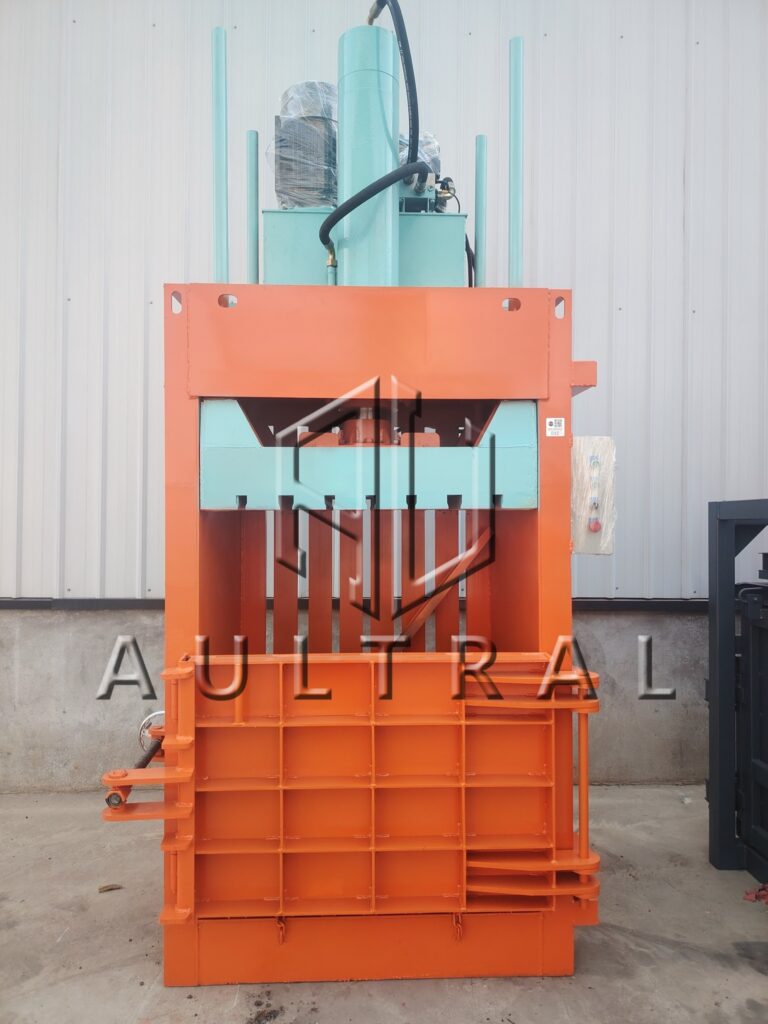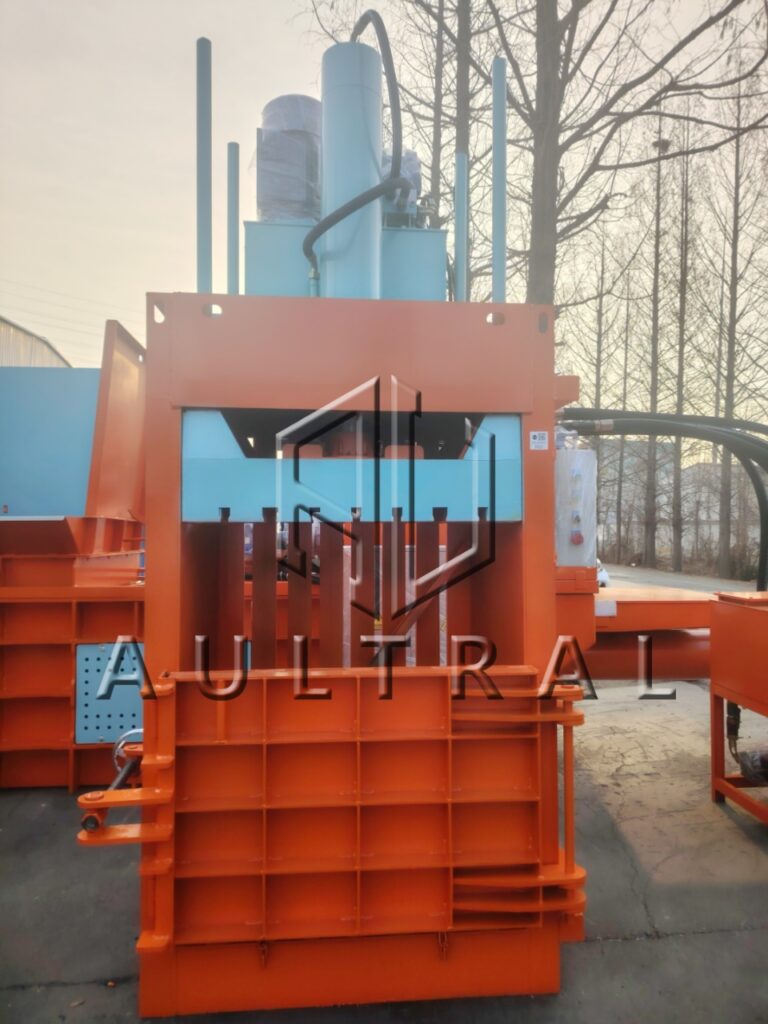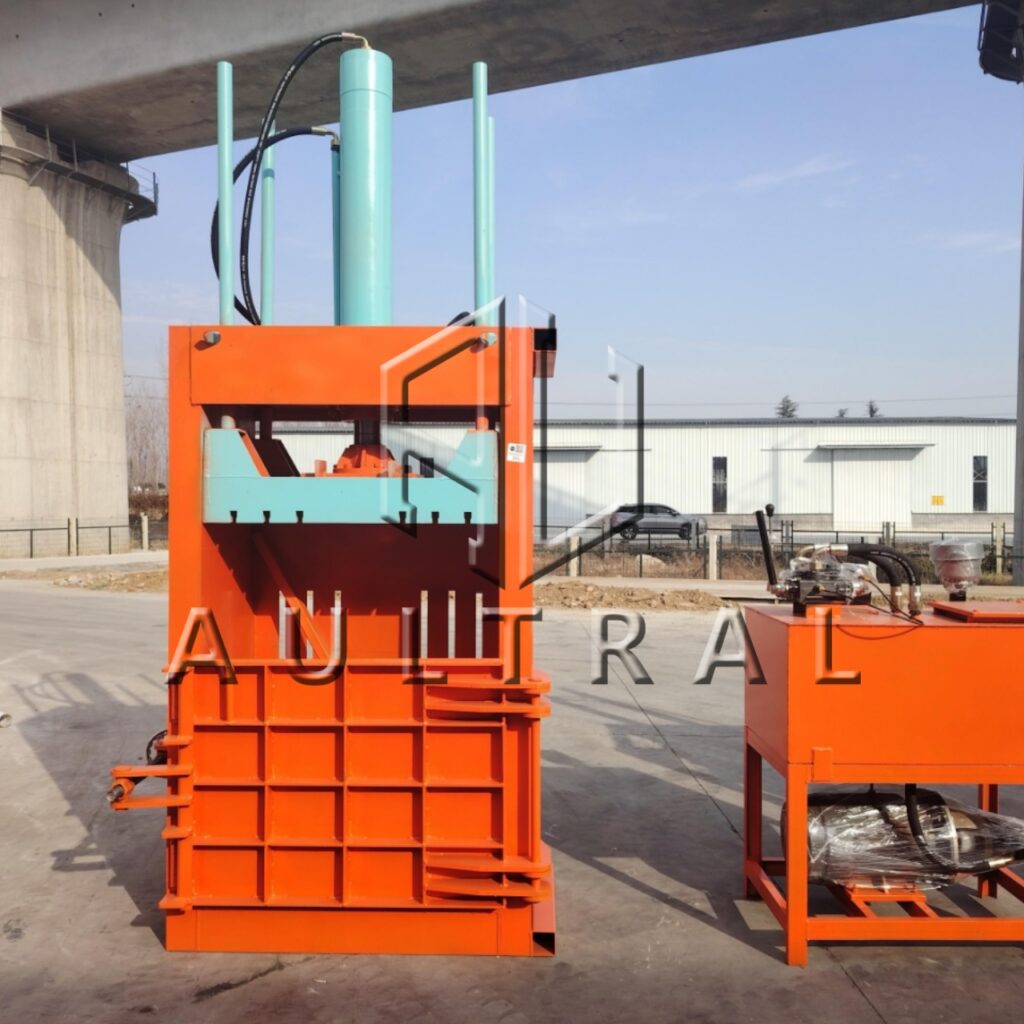What is a vertical baler?

A vertical baler is an efficient waste management machine designed to compress recyclable materials into compact bales. Unlike horizontal balers, which operate horizontally, vertical balers utilize a vertically mounted hydraulic ram to compress materials like cardboard, paper, plastic film, PET bottles, textiles, and aluminum cans.
Materials are loaded into a vertical chamber from the front or top, and once the chamber is full, the hydraulic system compresses the materials by pushing a platen downward. After compression, the bale is securely tied with strapping or wire, then ejected either manually or semi-automatically.
Why use a vertical baler?

Vertical balers are commonly used in:
•Retail stores
•Supermarkets
•Warehouses
•Restaurants
•Recycling centers
•Manufacturing facilities
They are particularly ideal for businesses generating lower to medium volumes of recyclable waste due to their space-saving design and cost-effectiveness.
Key Benefits of Vertical Balers:
1.Space Efficiency: Vertical design requires less floor space compared to horizontal balers, making it a great fit for smaller areas.
2.Cost Savings: By reducing waste volume, businesses can lower storage and transportation costs.
3.Improved Recycling Efficiency: Produces uniform, compact bales that are easier to handle, store, and transport.
4.Cleaner Work Environment: With waste neatly compressed, your facility stays organized and less cluttered.
5.Environmental Compliance: Helps businesses meet waste disposal regulations and promotes sustainable practices.
Vertical Baler Capacities
Vertical balers come in various sizes, typically ranging from 10 tons to 100 tons of compressing force, depending on the volume and type of material being processed. The bales produced can vary in size and weight depending on the machine’s model and its intended use.
How to use a vertical baler?

Using a vertical baler is a simple and efficient process, typically involving a few key steps to ensure safe and effective compression of recyclable materials. Here’s a step-by-step guide:
1.Load the Material
Open the front-loading door and place the recyclable materials—such as cardboard boxes, plastic film, paper, or aluminum cans—into the compression chamber. Be sure not to overfill the chamber, and try to load materials evenly for better compression.
2.Close and Lock the Door
Once the chamber is filled to the recommended level, securely close and lock the door to ensure safety during the compression process.
3.Activate the Hydraulic System
To begin the compression, the operator activates the hydraulic system. This is usually done by pressing a start button or pulling a lever, causing the vertical ram to move downward and compress the materials inside the chamber.
4.Wait for Compression to Complete
The hydraulic ram will continue downward until the materials are fully compressed. Once this cycle is complete, the ram will return to its original position.
5.Add More Materials (Optional)
If you want a fuller bale, you can add more materials before starting another compression cycle. Ensure the materials are packed tightly and evenly for maximum efficiency.
6.Tie the Bale
Once the bale reaches the desired size or weight, secure it by threading baling wire or strapping through the designated slots in the chamber. Depending on the machine, this can be done manually or semi-automatically.
7.Eject the Bale
After tying, open the bottom or side ejection door. Depending on the model, the bale may need to be manually pushed out or automatically ejected using a hydraulic system.
8.Prepare for Storage or Transport
The finished bale is now ready for storage, transport, or delivery to a recycling facility.
Safety Tips and Maintenance
•Safety First: Always follow the manufacturer’s safety instructions, wear appropriate protective gear (gloves, safety goggles, etc.), and ensure proper training for operators.
•Maintenance: Regular inspections and timely maintenance are crucial to keep the machine operating smoothly. This helps prevent accidents, ensures maximum efficiency, and extends the machine’s lifespan.
By following these steps and adhering to safety guidelines, operators can maximize the vertical baler’s effectiveness in compressing recyclable materials while maintaining a safe and efficient work environment.



